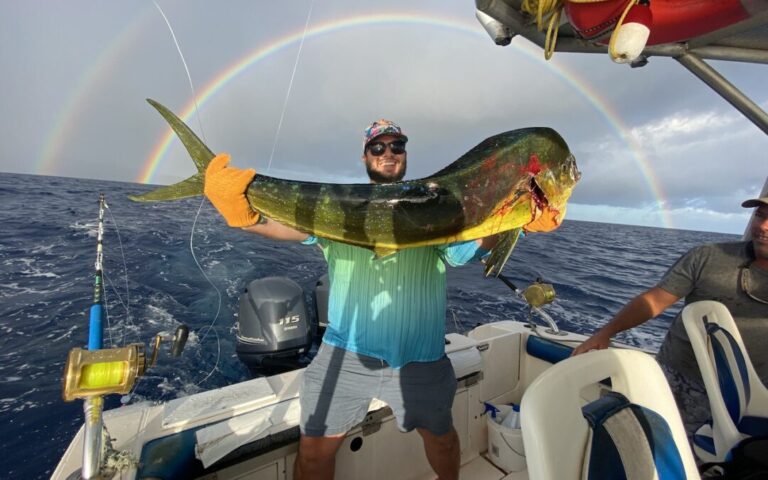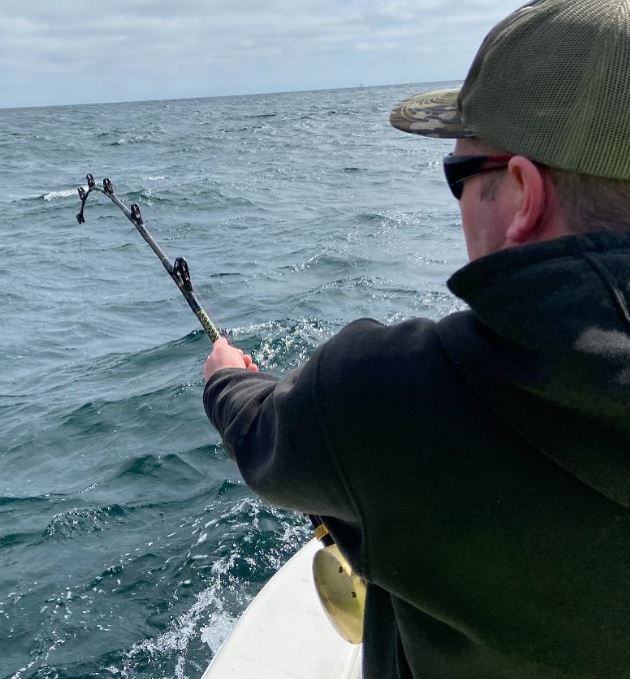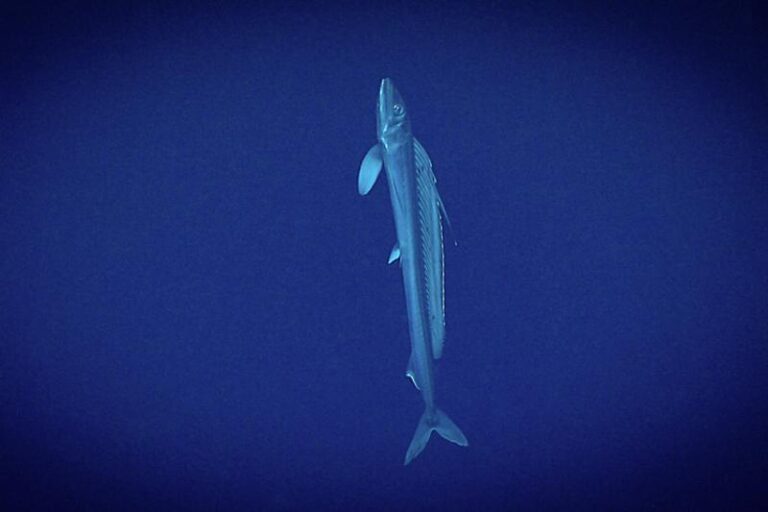The best times of day for deep sea fishing are early morning and late afternoon. During these times, the fish are more active and feeding near the surface, making it easier to catch a variety of species.
Deep sea fishing enthusiasts are always on the lookout for the best times to cast their lines and reel in the catch of a lifetime. Understanding the optimal times of day for deep sea fishing can greatly increase the chances of success and make the experience more enjoyable.
The two most favorable times for deep sea fishing are early morning and late afternoon. During these periods, the fish are more active as they move closer to the surface to feed. This makes it easier for anglers to target a variety of species and increases the likelihood of a rewarding fishing excursion. So, set the alarm clock and get ready to embark on a thrilling deep sea fishing adventure during the most productive times of day.

Credit: www.nationalgeographic.com
Understanding The Circadian Rhythm: How It Affects Deep Sea Fishing
The Natural Rhythm That Affects All Living Creatures
Our bodies operate on a natural, 24-hour cycle known as the circadian rhythm. This internal clock influences our sleep-wake cycles, hormone production, and even our levels of alertness throughout the day. The same holds true for marine life, including the fish we love to catch on deep sea fishing trips.
Understanding the circadian rhythm and how it affects deep sea fishing can give us valuable insights into the best times to cast our lines.
- Fish, like humans, have peak periods of activity and rest throughout the day, guided by their circadian rhythms.
- The circadian rhythm affects the metabolism, digestion, and behavior of fish, making some times of the day more favorable for fishing.
- By aligning our fishing trips with the fish’s natural rhythm, we increase our chances of finding them in their most active state, resulting in a more successful fishing experience.
Exploring The Impact Of The Sun, Moon, And Tides
The sun, moon, and tides play essential roles in the life of marine creatures, including fish. Their positions and movements influence not only the availability of light but also the behavior of fish. Let’s delve into how these factors impact deep sea fishing.
- Sunlight affects the depth at which fish swim, with different species having different light preferences.
- The moon’s phases influence tide patterns, which, in turn, affect fish activity.
- Fishing during specific tidal movements, such as the incoming or outgoing tide, can lead to increased fish feeding and greater chances of catching them.
Unveiling The Biology Behind Peak Fish Activity
Have you ever wondered why fish are more active during certain times of the day? The biology behind peak fish activity sheds light on this phenomenon.
- Fish are ectothermic, meaning their body temperature depends on their environment. As the water temperature changes throughout the day, so does their activity level.
- Fish use the cover of darkness to hunt for prey and avoid predators, making dawn and dusk prime fishing times.
- The availability of food sources, such as plankton and other smaller fish, also influences the peak feeding times of larger fish.
Now that we understand the circadian rhythm, the impact of the sun, moon, and tides, and the biology behind peak fish activity, we can make informed decisions about the best times of day for deep sea fishing. By aligning our fishing trips with these natural rhythms, we increase our chances of a bountiful catch and an unforgettable adventure on the open sea.
Happy fishing!
Sunrise Serenade: Early Morning Fishing Bonanza
Embrace The Magic Of The Golden Hour As Dawn Breaks
The early morning hours hold a special allure for deep-sea fishing enthusiasts. As the sun begins its ascent, casting a warm golden hue over the horizon, an exciting and productive fishing bonanza awaits those who venture out at this time.
Embrace the serenade of the sunrise and discover the joys of early morning deep-sea fishing.
The Optimal Techniques And Baiting Strategies
To maximize your chances of success during the early morning, it’s essential to employ the right techniques and baiting strategies. Here are some key points to keep in mind:
- Topwater lures: Utilize topwater lures as they imitate the movements of prey fish on the water’s surface, attracting hungry predators.
- Shallow diving crankbaits: These lures are effective in shallow waters and can induce strikes from a variety of species during the early morning feeding frenzy.
- Live bait: Consider using live bait, such as shrimp or small fish, as it can prove irresistible to larger predatory species.
- Slow retrieve: During the early morning, fish are often more sluggish, so employing a slow and steady retrieve can entice strikes.
Exploring The Species That Thrive In The Morning Light
The morning light brings about a shift in the behavior and feeding patterns of various deep-sea species. Here are some species known to thrive during these early hours:
- Mackerel: These fast and ferocious feeders are often found in abundance during the morning hours, making them a prime target for early fishermen.
- Snapper: Known for their aggressive feeding habits, snapper are more active during low light conditions, making early morning an opportune time to target them.
- Mahi-mahi: These brightly colored and acrobatic fish tend to be more active during the early morning hours, often found close to the surface.
- Tuna: Highly sought after for their strength and speed, tuna are known to congregate and feed near the surface during dawn, offering an exciting challenge for anglers.
So, if you’re seeking an unforgettable deep-sea fishing experience, set your alarm clock a little earlier, embrace the magic of the sunrise, and get ready for a memorable fishing bonanza in the golden hours of the morning.
Twilight Adventures: The Thrill Of Late Evening Fishing
Harness The Mystic Ambiance As The Sun Sets
As the sun begins to make its descent below the horizon, an entirely different atmosphere settles over the vastness of the ocean. Twilight casts an enchanting spell on the deep sea, offering a unique opportunity for fishing enthusiasts to experience the thrill of late evening fishing.
Whether you’re a seasoned angler seeking a new adventure or a beginner looking to explore the wonders of the deep sea, twilight fishing promises an exhilarating experience like no other.
Tips And Tricks To Maximize Your Catch During Dusk
To ensure a successful and fruitful twilight fishing excursion, consider implementing the following tips and tricks:
- Optimal location: Research and identify areas known for their abundance of fish during twilight hours. Consult local fishing guides or experienced anglers for insider tips on the best spots to explore.
- Time management: Plan your fishing trip to coincide with the transition from daylight to twilight. Arriving early allows you to set up and get familiar with the surroundings before the magic of twilight begins.
- Proper gear and equipment: Verify that your fishing gear is in top-notch condition and suitable for deep sea fishing. Ensure you have the appropriate hooks, lines, and bait for the target species you intend to catch.
- Lighting essentials: As darkness creeps in, it’s crucial to bring reliable and bright lighting equipment. Headlamps, flashlights, and lanterns are essential tools that enhance visibility and enable you to navigate your boat or fishing area with ease.
- Bait selection: Experiment with different types of bait to attract fish during twilight hours. Certain species may respond better to specific bait, so it’s advisable to have a varied selection at your disposal.
- Engage in noise control: Maintain a calm and minimal noise level while on your fishing expedition. The serene ambiance of twilight can be disrupted by excessive noise, potentially scaring away fish.
- Patience and persistence: Twilight fishing often requires a bit more patience than daytime fishing. Embrace the tranquility of the surroundings and be prepared to wait for the perfect bite. Persistence is key when it comes to twilight adventures.
- Safety precautions: Prioritize safety when venturing out into the deep sea for twilight fishing. Ensure you have life jackets, appropriate navigational tools, and a reliable means of communication in case of emergencies.
- Adapting to changing conditions: As the light fades, fish behavior may change. Be ready to adapt your fishing techniques accordingly. Experiment with different depths, retrieve speeds, and presentations until you find what attracts the most bites.
- Embrace the nocturnal wonders: Twilight fishing offers a unique opportunity to witness the mystical wonders of the deep sea at night. Keep an eye out for bioluminescent plankton, mesmerizing starry skies, and the occasional wildlife encounter.
Remember, each twilight fishing adventure holds its own surprises and rewards. Embrace the darkness, tap into the mystic ambiance, and allow yourself to be captivated by the incredible experiences awaiting you in the deep sea’s twilight hours. Happy fishing!
The Midnight Hunt: Tapping Into The Deep Sea’S Secrets
Embracing The Darkness For Extraordinary Encounters
Exploring the deep sea at night brings a whole new level of excitement and adventure to deep-sea fishing. When darkness falls, the ocean reveals its secrets, and for those daring enough to venture into the midnight waters, the rewards can be extraordinary.
Here’s why you should consider embarking on a nighttime deep-sea fishing excursion:
- Thrilling sensations: There’s an undeniable thrill that comes with fishing in the middle of the night. The mystery and anticipation of what lurks beneath the surface create an adrenaline rush like no other.
- Escape the crowds: If you prefer a quieter and more serene fishing experience, the midnight hours are your best bet. With most anglers opting for daytime trips, you’ll have the open sea all to yourself, undisturbed by the hustle and bustle of other boats.
- Different species, different behaviors: At night, a whole range of unique marine species emerge from the depths. These nocturnal creatures have fascinating habits and behaviors that you’re unlikely to witness during the day. Prepare to come face-to-face with elusive trophy fish that only roam the waters after dark.
Unveiling The Unique Species That Emerge At Night
When you venture out for a midnight deep-sea fishing expedition, expect to encounter a delightful array of species that thrive under the cloak of darkness. Here are some extraordinary examples you might encounter:
- Swordfish: Renowned for its captivating sword-like bill, the swordfish is a highly sought-after game fish that often prowls the darkness. Catching one of these majestic creatures will surely be the highlight of your angling adventures.
- Tuna: Known for their strength and speed, numerous tuna species actively feed at night. Prepare yourself for an exciting battle as you attempt to reel in these powerful predators.
- Sharks: Nocturnal species like the mako and thresher sharks become more active during the dark hours. These apex predators will provide an unforgettable challenge for avid anglers seeking an adrenaline rush.
- Mahi-mahi: Also known as dolphinfish, mahi-mahi flaunts its vibrant colors even during the darkest nights. Their acrobatic leaps and fierce fights make them a prized catch for any angler.
Navigating The Challenges And Staying Safe In The Darkness
While nighttime deep-sea fishing offers exceptional opportunities, it is crucial to stay safe and prepared. Here are some tips to navigate the challenges of fishing in the darkness:
- Gear up with proper lighting: Ensure your boat and fishing equipment have sufficient lighting to navigate the dark waters safely. Led lights, headlamps, and spotlights are essential tools for nighttime visibility.
- Be vigilant of changing conditions: Weather and sea conditions can change rapidly, especially after sunset. Keep a close eye on the forecast and any signs of approaching storms to avoid potential dangers.
- Buddy up: Fishing at night is best enjoyed with a partner or a group. Having someone by your side not only enhances the overall experience but also provides an added layer of safety and support.
- Equip with safety essentials: Always carry essential safety gear, including life jackets, a first aid kit, and communication tools such as a vhf radio or satellite phone, in case of emergencies.
Now that you are aware of the incredible encounters and unique species that await you in the darkness, why not embark on a thrilling midnight deep-sea fishing expedition? Experience the magic of the nocturnal ocean and create memories that will last a lifetime.
Happy fishing!
Conclusion
When planning a deep sea fishing trip, choosing the best time of day can greatly increase your chances of success. By considering factors such as weather, tides, and fish behavior, you can optimize your fishing experience. Early morning is often the ideal time to hit the water as the fish are most active and feeding.
The calmness of the water during this time allows for smoother navigation and better visibility. However, do not discount the late afternoon and early evening hours, as fish tend to be more active during these times as well. Pay attention to the tides, as fishing during a tidal change can bring about a flurry of activity.
No matter the time of day, being prepared with the right equipment, bait, and knowledge will ultimately determine your success. So, get out there, enjoy the thrill of deep sea fishing, and make the most of the best times of day for this exhilarating adventure.





